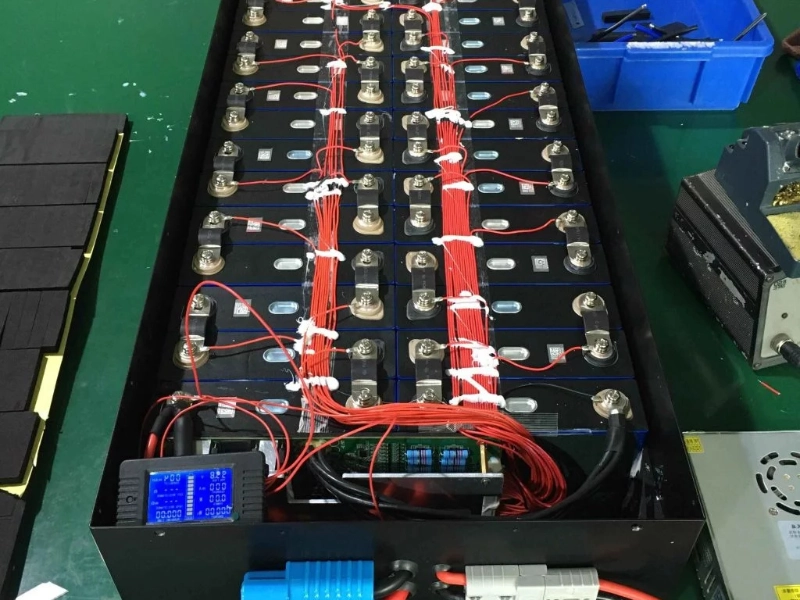Golf CartBatteries: Maintenance And Replacement Tips
Although golfers concentrate much on improving their swing, they also have to take care of the golf cart batteries. Little proactive maintenance will maximise its performance and increase the interval between charges. Whether your cart runs on lithium or conventional lead-acid, correct management is crucial. These pointers will help your new golf cart battery last as long as possible.
Charger

Water Level
 The operation of lead-acid batteries depends much on the water levels in them. They let the lead plates let the sulphuric acid pass through them generating power. Shorter lifespans and less power follow from the battery's inability to retain a charge without appropriate water levels.
Regular check and top-up with distilled water for golf cart batteries with wet cells. This will help to keep their performance and lifetime and stop the sulphuric acid solution from reaching dangerous low levels.
Just take off the battery lids and look into every cell to find the water levels. Should the cells be low, cautiously add distilled water until the level exceeds the maximum fill line. Since distilled water does not include minerals and contaminants that can damage the batteries, it is advised over tap or rainwater. These easy maintenance chores will increase the performance and prolong the life of your battery.
The operation of lead-acid batteries depends much on the water levels in them. They let the lead plates let the sulphuric acid pass through them generating power. Shorter lifespans and less power follow from the battery's inability to retain a charge without appropriate water levels.
Regular check and top-up with distilled water for golf cart batteries with wet cells. This will help to keep their performance and lifetime and stop the sulphuric acid solution from reaching dangerous low levels.
Just take off the battery lids and look into every cell to find the water levels. Should the cells be low, cautiously add distilled water until the level exceeds the maximum fill line. Since distilled water does not include minerals and contaminants that can damage the batteries, it is advised over tap or rainwater. These easy maintenance chores will increase the performance and prolong the life of your battery.
Termin terminals
 Effective power transfer and lifetime of golf cart batteries depend on a clean terminal. Corroded terminals can cause a battery to fail and impede charging ability. Frequent visual inspection and cleaning help to avoid the efficiency loss brought about by corrosion and grime.
Replace all the same size and voltage units simultaneously if you are changing a golf cart battery. Combining new and old batteries might cause overcharging of the older units, therefore drastically shortening their lifetime.
Water levels in conventional lead-acid batteries should be routinely checked and topped off. For refills, use distilled water; tap water can bring contaminants that might compromise the battery. Furthermore crucial is keeping the batteries cold and covering them when not in use to guard them against high temperatures that can cut their lifetime. Additionally extending their lifetime is using a charger made especially for golf carts.
Effective power transfer and lifetime of golf cart batteries depend on a clean terminal. Corroded terminals can cause a battery to fail and impede charging ability. Frequent visual inspection and cleaning help to avoid the efficiency loss brought about by corrosion and grime.
Replace all the same size and voltage units simultaneously if you are changing a golf cart battery. Combining new and old batteries might cause overcharging of the older units, therefore drastically shortening their lifetime.
Water levels in conventional lead-acid batteries should be routinely checked and topped off. For refills, use distilled water; tap water can bring contaminants that might compromise the battery. Furthermore crucial is keeping the batteries cold and covering them when not in use to guard them against high temperatures that can cut their lifetime. Additionally extending their lifetime is using a charger made especially for golf carts.
Stow
 While improving their swing takes a lot of time, golfers should also pay close attention to the tools and equipment that enable them to move around the course. Any golf cart's battery is one of its most important parts, thus a little proactive maintenance helps to maximise performance, extend longevity, and lower the need for replacements.
Before long storage of the cart, fully charge and unplug batteries. This helps stop sulfation—that which results from lead-acid batteries being left in a depleted condition for too long. Eliminating "phantom loads" such onboard electronics will also help to prevent drain during storage.
The most classic option for golf carts and with minimal initial cost are flooded lead acid (FLA) batteries. Still, they need frequent maintenance and have the shortest lifetime among the golf cart battery kinds. Though they cost more up front, absorbed glass mat (AGM) and lithium batteries last far longer and require less maintenance.
While improving their swing takes a lot of time, golfers should also pay close attention to the tools and equipment that enable them to move around the course. Any golf cart's battery is one of its most important parts, thus a little proactive maintenance helps to maximise performance, extend longevity, and lower the need for replacements.
Before long storage of the cart, fully charge and unplug batteries. This helps stop sulfation—that which results from lead-acid batteries being left in a depleted condition for too long. Eliminating "phantom loads" such onboard electronics will also help to prevent drain during storage.
The most classic option for golf carts and with minimal initial cost are flooded lead acid (FLA) batteries. Still, they need frequent maintenance and have the shortest lifetime among the golf cart battery kinds. Though they cost more up front, absorbed glass mat (AGM) and lithium batteries last far longer and require less maintenance.









